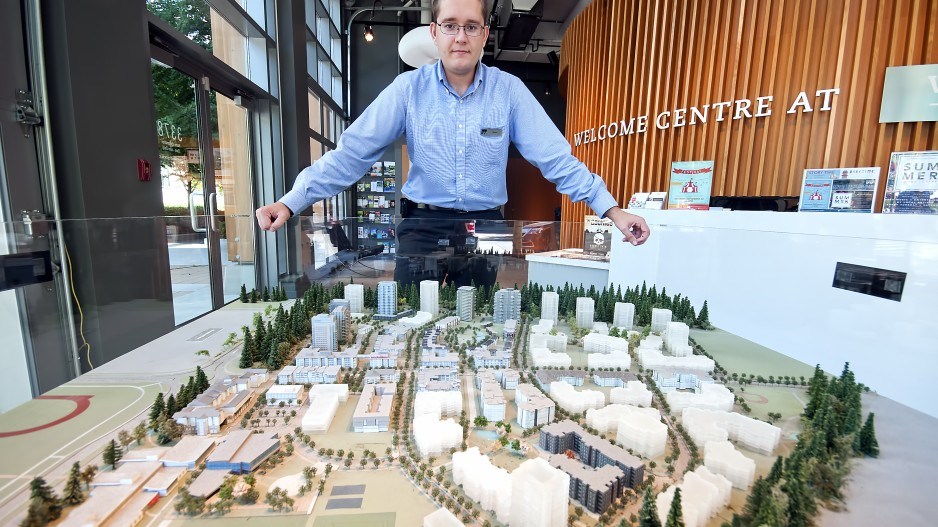No university in the world has a trust fund setup like the University of British Columbia’s (UBC), according to Randy Zien.
And he would know.
As chairman of the UBC Properties Trust, Zien oversees an organization that has managed more than $2 billion in development projects on UBC’s endowment lands over the last decade.
All development at the university goes through the trust, which is overseen by a board of directors made up of real estate veterans. The trust acts as an adviser to UBC, builds staff and faculty rental housing projects and partners with external developers on for-market developments.
It has also overseen all institutional building projects for the past 10 years and has added six million square feet of institutional space to UBC’s Vancouver and Okanagan campuses since 2004.
“If you look back 30 years, the university has gone from I don’t know what it was, to the sixth top university in North American for a public institution,” said Robert Lee, who was appointed to the UBC Board of Governors in 1984, and subsequently founded what became UBC Properties.
The key to UBC’s rise in rankings is its land, said Lee, and his insistence at the time that it be made available through leasehold, a move that was “very, very hard to do” in Vancouver 30 years ago. The land is now a trust fund that keeps on giving.
“Every 100 years we get another big cheque,” said Lee.
“That’s the genius of Bob Lee,” added Zien.
Owning the land it lives on has allowed UBC Properties to finance multimillion-dollar development projects completely or primarily through land equity. Bringing its development operations in-house has also allowed UBC Properties to deliver projects 20% below what the market would have charged because it doesn’t seek out profit.
When it does partner with external developers on projects – such as Adera’s Prodigy development at Wesbrook Village – the trust receives a tidy sum for the land it leases, a portion of the project profits and the opportunity to lease the land for another sum decades down the road.
It’s that arrangement that’s perhaps the only one of its kind in the world.
“It’s unbelievable the number of people who come from all over he world – especially North America – to look and see if they could emulate what Bob Lee created here. But they can’t,” said Zien.
“It takes a magical set of circumstances. You can’t copy the sauce if you don’t have the ingredients, even if you’d like to.”
UBC $1.7 billion endowment is Canada’s largest after the University of Toronto’s, which is more than $2.1 billion. Just under a third of UBC’s endowment has come from property development. Unlike the $1.2 billion from donors, the $500 million from UBC Properties is earmarked for discretionary spending.
At this stage, the university’s main endowment generates around 2,500 annual student awards, 283 academic programs, 186 research funds, 100 professorships and scholarships, 92 student programs, 47 community programs and 41 library and arts collections. It also provides funding for teaching and learning facilities, as well as housing for students, staff and faculty.
“The benefit is spread widely across the university and has a benefit on many, many people,” said Peter Smaile, UBC treasurer.
“What the endowment allows us to do, and the land revenues along with that, is to compete internationally and be consistently ranked among the top 40 universities in the world,” he said. “It also really allows us to invest in recruiting some of the best faculty in the world.”
Of the nearly 300 acres of UBC land available for development, an estimated $1 billion of it – or one third – remains available.
Over the next four years, UBC will continue investing $450 million in student housing over five projects – an initiative that aims to generate 12,500 beds between 2015 and 2020.
“We’re just poking along, building a little village that only 18,000 to 19,000 people will live in,” said Zien.
That’s a “village” with the population size of Fort St. John or 2.5 times that of Whistler.
“I expect that the development business will continue indefinitely.”




